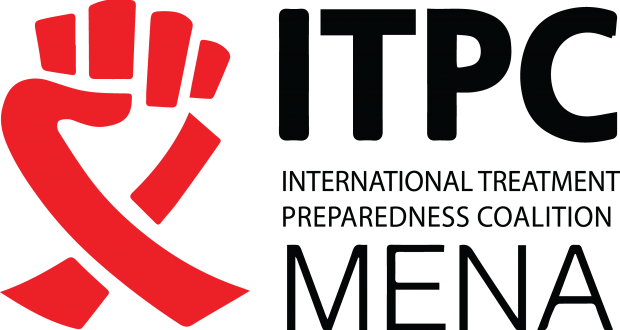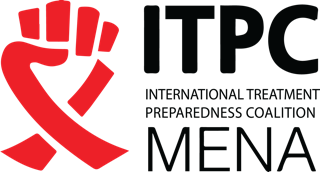
Differentiated Application Briefing 2018
Each funding cycle tends to bring some procedural and financial changes for Global Fund grants. The “new funding model,” which rolled out in 2014, represented a major shift in how countries were expected to develop and submit applications for funding. For the current funding cycle–or allocation period–2017-2019, there are some further changes to the model, which mostly build on principles of the “new funding model.” Several countries in the MENA region have already submitted funding requests for this cycle, but five (Algeria, Djibouti, Egypt, Mauritania, and Tunisia) are expected to submit over in February or April of this year. In addition, the Middle East Regional multi-country funding request is expected to be submitted by 30 April, in Window 5. Therefore, we would like to take the opportunity to brush up on some basics about the different application types and country timelines.
Key terminology change:“Concept note” is now “funding request”
One of the most important changes for the 2017-2019 cycle is the instituting of the “differentiated application process.” In the last allocation period, all country applicants completed the same form of funding request, or “concept note” as it was formerly called. However, in the “differentiated” approach, there are several different funding request, or application, forms and corresponding review processes. According to the Global Fund’s 2017-2019 Funding Cycle Frequently Asked Questions document, “This updated process allows for flexible and tailored funding requests that are ‘right-sized’ to match the needs and context of a country.”
Three different approaches
In the new process, there are three main types of applications for funding: program continuation, tailored review, and full review.
| Program continuation | Tailored review | Full review |
| Simplifies and streamlines the funding request process to ensure well-performing programs with no material change needed can continue implementation with minimal distraction. The most simplified application type. | Several types of applications with “appropriately designed” documentation requirements: | Comprehensive overall review of a program’s approach and strategic priorities. The most extensive application type. |
|
Challenging operating environments (COE) Transition (out of GF eligibility) National strategy-based approaches Results-based or innovative financing approaches Material reprogramming |
TRP review
One of the key distinctions between the application approaches, besides the depth of the applications themselves, is the rigor the Technical Review Panel (TRP) will apply. As the diagram below shows, each application type has a different level of TRP review. Program continuation funding requests will only have a “TRP validation,” which is more or less a stamp of approval from TRP, if there are in fact no major changes. This makes sense because program continuation proposals are based on an already active and well-reviewed program, rather than new interventions or implementation arrangements. Tailored review will involve TRP review of the funding request in accordance with the specifics of the particular style of application (see center column above). As for full review, this will be most similar to the review of concept notes in the 2014-2016 allocation period, and should be expected to take significant time and attention from the TRP, CCM, and other stakeholders to achieve resolution.

Image: Community Leadership and Action Collaborative
Allocation letters
All Global Fund-eligible countries received “allocation letters” in December 2016. These letters informed country coordinating mechanisms (CCMs) of the allocation amount for the country (or how much funding was available to the country) and the application approach they are recommended to use. Below is a table of focus MENA countries, the type of application approach, and the anticipated submission window. As you will note, nearly all countries in the MENA region have been recommended for a tailored approach of one sort or another.
| Country |
Com- ponent |
Application Type | Submission Window |
| Algeria | HIV | Tailored (Transition) | W5 |
| Djibouti | HIV/TB | Tailored (Material change) | W5 |
| Djibouti | Malaria | Tailored (Material change) | W5 |
| Egypt | HIV | Tailored (Simplified) | W5 |
| Egypt | TB | Tailored (Simplified) | W5 |
| Eritrea | TB | Tailored (Challenging operating environment) | W2 |
| Eritrea | HIV/AIDS | Tailored (Challenging operating environment) | W2 |
| Eritrea | Malaria | Program Continuation | W1 |
| Mauritania | HIV | Tailored (Challenging operating environment) | W4 |
| Mauritania | TB | Tailored (Challenging operating environment) | W4 |
| Mauritania | Malaria | Tailored (Challenging operating environment) | W4 |
| Mauritania | RSSH* | Full review | W4 |
| Middle East Regional | HIV/AIDS | Tailored (Challenging operating environment) | W5 |
| Middle East Regional | Malaria | Tailored (Challenging operating environment) | W5 |
| Middle East Regional | TB | Tailored (Challenging operating environment) | W5 |
| Morocco | HIV | Tailored (Innovative – NSP Pilot) | W2 |
| Morocco | TB | Tailored (Innovative – NSP Pilot) | W2 |
| Somalia | HIV | Tailored (Challenging operating environment) | W2 |
| Somalia | TB | Tailored (Challenging operating environment) | W2 |
| Somalia | Malaria | Program Continuation | W1 |
| South Sudan | HIV | Tailored (Challenging operating environment) | W2 |
| South Sudan | TB | Tailored (Challenging operating environment) | W2 |
| South Sudan | Malaria | Tailored (Challenging operating environment) | W2 |
| Tunisia | HIV | Tailored (Material change) | W4 |
|
W1: 20 March 2017 – W2: 23 May 2017 – W3: 28 August 2017 W4: 7 February 2018 – W5: 30 April 2018 |
|||
*-RSSH: “Resilient and sustainable systems for health”
All funding requests include…
No matter the application approach, all funding request application forms include the same five sections:
- Country Context
Applicants provide information on the current epidemiological situation and outline the constraints and barriers. They also provide an assessment of the country’s current response to the disease.
- Funding Request
In this section, the country will prioritize the interventions and programs to be included in the Global Fund grant(s) and referenced in the attached Programmatic Gap Table(s), Funding Landscape Table(s), Performance Framework and Budget.
- Operationalization and Risk Mitigation
After defining and costing the interventions to be funded, countries detail how these interventions will be implemented, and by whom. They also cover risk mitigation measures that will be put into place.
- Funding Landscape, Co-financing and Sustainability
What is the current funding landscape, and what is the anticipated future funding? This allows reviewers to understand the total commitments to the disease, both from the country and from other donors. In this section, countries also outline their commitments to co-financing and sustainability.
- Prioritized Above Allocation Request (PAAR)
All applicants are encouraged to include a prioritized request for additional funding beyond the allocation with their application. The total amount should represent at least 30 to 50 percent of the funding request. The prioritized above allocation request will be reviewed by the Technical Review Panel and technically strong interventions will be registered as unfunded quality demand, and thereby eligible for funding should additional resources become available.
All stakeholders are encouraged to familiarize themselves with the appropriate funding request application form, which can all be found on the Global Fund’s page, “Application Materials.”
Other important Global Fund resources for applicants:
- The Applicant Handbook: A practical guide to preparing a funding request following receipt of an allocation letter
- 2017-2019 Funding Cycle Overview
- 2017-2019 Funding Cycle, Frequently Asked Questions
- Keep track of all funding requests with the Funding Request Status Tracker










